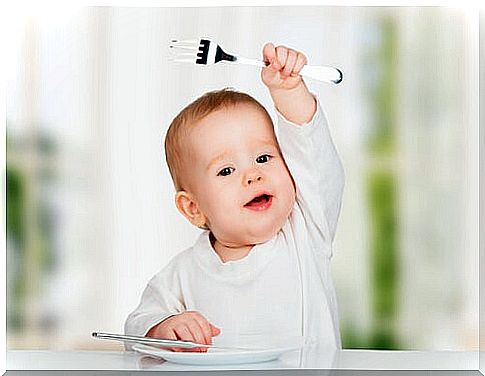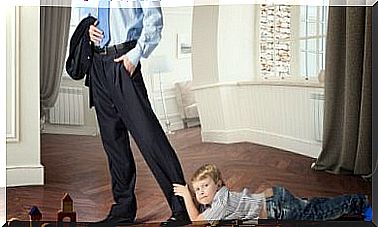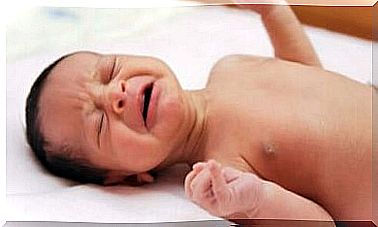5 Tips For Teaching Children To Eat Alone

Teaching children to eat alone gives parents more time to carry out everyday tasks. Getting rid of this daily chore brings significant benefits to family life, because, in this way, all family members can eat together.
For this to be possible, you need to be there when children learn to eat on their own . The most important thing is that you pay particular attention to cutting the food into very small pieces, to avoid the danger of asphyxiation. Also, by praising the child’s efforts, you will encourage him to continue his attempts.
Between 12 and 15 months, according to the evolution of motor skills, babies are able to hold the spoon and bring it to their mouth. At this time, your child may be taking their first giant steps in this transition.
At the age of two, they usually start using the fork as well. We recommend that you postpone the challenge of allowing them to cut food with a knife to the future. Using a blade can be dangerous and it is an activity that must be done under your supervision.
5 tips for teaching children to eat on their own
In order for the baby to start eating on his own, a few strategies need to be put into practice. Here are the tips we recommend you follow:
1. Offer him food that he can eat with his hands
The first step in getting children to learn to eat for themselves is to use foods that they can eat with their hands. They must be cut into small pieces and must be easy to chew and swallow. In addition, they must be foods that can easily melt in the mouth.
When the child is older and already knows how to grasp things with their hands, it may be a good time to introduce them to the use of cutlery. To do this, the best way is to cut the food into small pieces and give it a plastic fork.

There are some foods that are particularly easy for the little one to digest. They can be bits of ripe fruit such as banana, mango or peach, soft cooked vegetables, such as carrot, or pasta and bits of cheese.
2. Prepare his favorite dish
If you notice that your child is having difficulty eating without your help, it is possible that a good solution is to prepare his favorite meal . Of course, it will be much easier for him to start eating alone when, in front of him, he finds foods that catch his attention.
In a situation like this, it is possible that the dish is motivation enough for him to decide to venture out to grab his fork and eat without the help of his parents or other family members.
3. Eat next to the baby
For little ones, the best way to learn is to observe adults. For this reason, family meals are an excellent opportunity for children to learn to eat on their own. In this way, the little one will be able to repeat and imitate the movements of the grown-ups, while enjoying the company of all.
In fact, it is highly recommended to sit in front of the baby and observe him while he tries to eat by himself. Adopting a positive attitude will allow children to feel more self-confident: as a result, they will learn more quickly to eat without the help of others.
4. Involve all family members
Psychologically, in order for the child to start eating without your help, you must show him that eating is an activity that older siblings and adults do. You will see that, in this way, the baby will soon start eating alone.
All family members must be involved in this process. Likewise, no one should give in and feed the baby.

5. Prepare for disaster
To teach children to eat on their own, it is necessary to prepare for disaster. It is possible that, during this stage of apprenticeship, children will dirty the table and end up staining their clothes.
To avoid this, we recommend that you have them wear a bib, which, at the very least, will contain the damage. Stains will still be inevitable, but the use of bibs and protective fabrics will make this moment more bearable.
Ultimately, remember to always encourage your child on this path. Be patient and compliment him on all his successes. We recommend that you create a pleasant environment when you eat your meals by introducing a small and simple routine.









